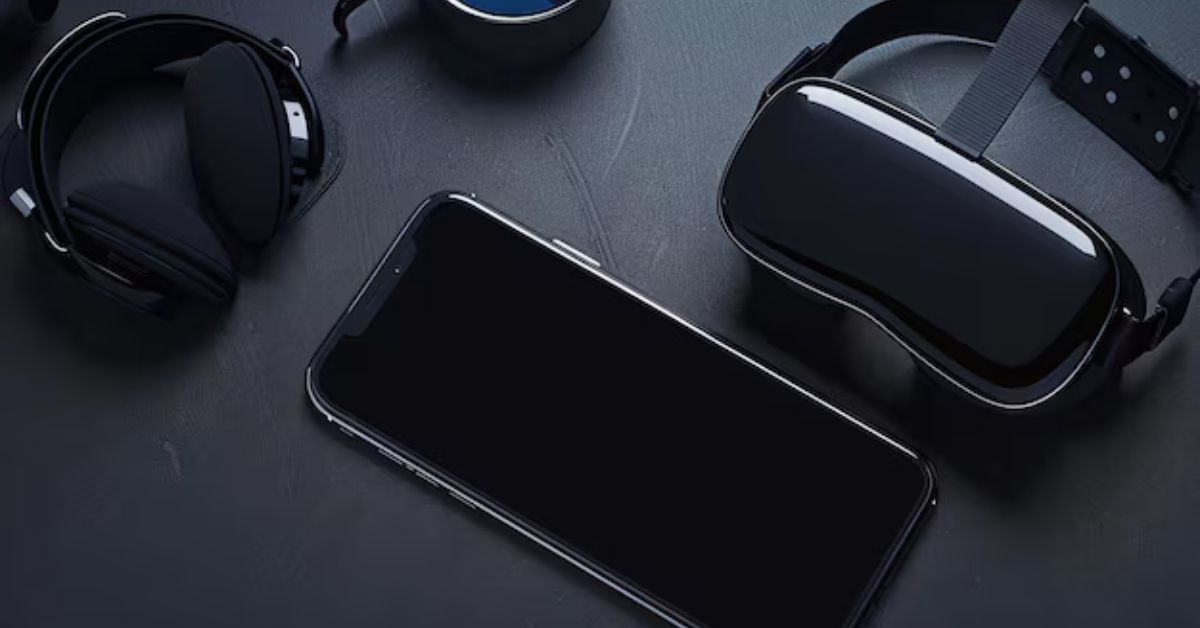Gadgets are integral to daily life, shaping the way we work, communicate, entertain ourselves, and manage routine tasks. From smartphones and wearable technology to smart home devices, these compact, innovative tools have evolved significantly, revolutionizing how we interact with the world. This article explores the definition of gadgets, their various types, how they impact our lives, and the future potential of these devices.
What Are Gadgets?
A gadget is a small, specialized mechanical or electronic device designed to perform a particular function. These devices are typically portable, user-friendly, and often feature innovative technology that simplifies daily tasks. The term “gadget” can apply to a wide range of products, from smartphones and tablets to kitchen appliances, smartwatches, and even fitness trackers.
Gadgets are distinct from traditional tools or appliances because they often incorporate cutting-edge technology and design features that offer a higher level of convenience or functionality. They aim to enhance the user’s experience by making tasks more efficient, entertaining, or accessible.
Categories of Gadgets
The world of gadgets encompasses a vast array of devices, each tailored to meet specific needs. Below are some of the most common categories:
1. Communication Gadgets
Communication gadgets, such as smartphones, tablets, and laptops, have transformed the way people connect and share information. Smartphones, in particular, combine multiple functions—phone calls, texting, internet browsing, photography, and more—into a single device. These gadgets have revolutionized global communication, making it easier for people to stay connected wherever they are.
2. Wearable Gadgets
Wearable gadgets, such as smartwatches, fitness trackers, and augmented reality glasses, provide convenience and advanced features that integrate into daily routines. Smartwatches, for example, allow users to check notifications, track their health metrics, and even make phone calls directly from their wrist. Fitness trackers like Fitbit and Garmin provide users with detailed insights into their physical activity, sleep patterns, and overall health.
3. Smart Home Gadgets
Smart home gadgets are designed to make homes more comfortable, efficient, and secure. Devices such as smart thermostats, smart lighting, and smart security cameras allow users to control various aspects of their home environment remotely via smartphone apps. Smart assistants like Amazon’s Alexa or Google Home act as central hubs, allowing users to manage multiple smart devices with voice commands.
4. Entertainment Gadgets
Entertainment gadgets, including gaming consoles, virtual reality headsets, and streaming devices, cater to the growing demand for interactive and immersive media experiences. Virtual reality (VR) headsets, such as the Oculus Rift, provide users with immersive environments for gaming, education, and entertainment, while streaming devices like Roku and Amazon Fire Stick make it easy to access a wealth of digital content on-demand.
5. Personal Gadgets
Personal gadgets refer to everyday tools like e-readers, noise-canceling headphones, and portable chargers. These gadgets are designed to enhance convenience in personal routines, offering solutions that improve accessibility and ease of use. For instance, noise-canceling headphones, such as those from Bose or Sony, provide an enhanced audio experience by reducing background noise, making them ideal for both travel and work.
The Role of Gadgets in Daily Life
It play a crucial role in enhancing convenience and efficiency. Their primary benefit lies in their ability to simplify and automate tasks that once required significant effort or time. Whether it’s ordering groceries through a smartphone app, turning on the lights with a voice command, or monitoring health through a wearable device, they have made daily tasks more manageable.
1. Increased Productivity
One of the most significant impacts of it is the boost they provide in productivity. Communication its like smartphones and laptops allow users to stay connected and complete work from anywhere. Productivity apps such as Slack, Trello, and Google Workspace enable remote work, collaboration, and project management, streamlining workflows and increasing efficiency.
Wearable like smartwatches and fitness trackers help individuals monitor their health and set fitness goals, contributing to increased productivity by fostering better physical and mental health. Additionally, the integration of artificial intelligence (AI) in gadgets can automate repetitive tasks, saving time and effort.
2. Improved Communication
Communication has been revolutionized by it like smartphones and tablets. With apps such as WhatsApp, Skype, and Zoom, people can connect in real time with family, friends, and colleagues across the globe. Gadgets have blurred the lines between work and personal life, enabling more flexibility in communication and interaction.
Moreover, social media platforms accessible through gadgets have transformed the way individuals, businesses, and organizations share information and engage with others. This connectivity has made the world more interconnected, allowing for seamless information exchange and collaboration.
3. Enhanced Entertainment
They have expanded the possibilities for entertainment, providing on-demand access to movies, games, music, and virtual experiences. Devices like gaming consoles, smart TVs, and VR headsets deliver immersive experiences that were once unimaginable. Streaming it, such as Amazon Fire TV and Chromecast, allow users to watch their favorite shows, movies, and sports at their convenience, revolutionizing traditional television consumption.
Gaming gadgets, including consoles like PlayStation and Xbox, cater to a vast audience, offering diverse gaming experiences that span genres and age groups. The popularity of e-sports and online multiplayer games highlights the increasing role of gadgets in entertainment.
4. Health and Fitness
Health and fitness gadgets, like smartwatches and fitness trackers, help users monitor their physical activity, sleep patterns, and overall health metrics. These devices promote a healthier lifestyle by tracking steps, calories burned, and heart rate. Some advanced models, such as the Apple Watch, can even perform electrocardiograms (ECGs) and monitor blood oxygen levels.
These gadgets encourage users to set fitness goals and maintain healthy habits, making it easier to stay active and monitor progress. This integration of technology into personal health routines has revolutionized the fitness industry, making it more accessible to individuals worldwide.
Future of Gadgets
The future of gadgets promises even more innovation as technology continues to advance. Emerging technologies such as AI, machine learning, 5G, and the Internet of Things (IoT) are expected to drive the next generation of gadgets, offering new possibilities for automation, connectivity, and personalization.
1. AI-Powered Gadgets
Artificial intelligence is playing an increasingly significant role in gadget development. AI-powered gadgets, such as smart assistants and autonomous vehicles, are set to become more intelligent, responsive, and capable of handling complex tasks. These devices will be able to anticipate user needs, provide personalized recommendations, and streamline daily routines even further.
2. 5G Connectivity
The rollout of 5G technology will enable faster internet speeds and lower latency, transforming the way gadgets connect and communicate. With 5G, smart home devices, wearables, and other gadgets will be able to interact more seamlessly, providing a more integrated experience. The higher bandwidth will also enable more advanced functionalities in gadgets, such as real-time video streaming and immersive VR experiences.
3. Wearable Technology Expansion
Wearable gadgets are expected to expand beyond fitness trackers and smartwatches. The development of smart clothing, augmented reality (AR) glasses, and even brain-computer interfaces could redefine how people interact with technology. These devices will become more sophisticated, blending seamlessly into everyday life while offering enhanced capabilities.
Conclusion
Gadgets have become indispensable tools in modern life, offering convenience, entertainment, and connectivity. From communication devices to smart home technology and wearable gadgets, these innovative tools continue to shape how we interact with the world. As technology evolves, the future of its promises even greater advancements, making life more efficient, personalized, and integrated.
In a world driven by technological innovation, they are not just luxury items but essential components of everyday life, transforming how we live, work, and play. Whether you’re using a smartphone to connect with loved ones, a smartwatch to track your fitness goals, or a smart assistant to control your home, it will continue to enhance and streamline the human experience.










